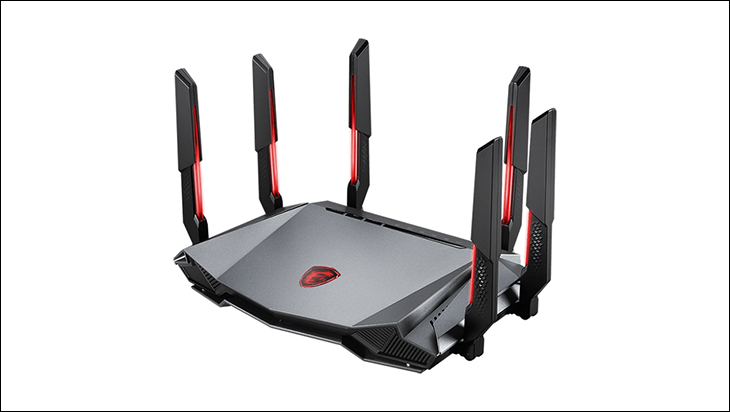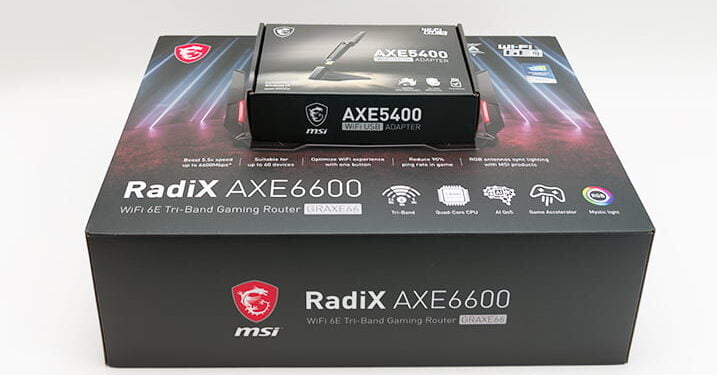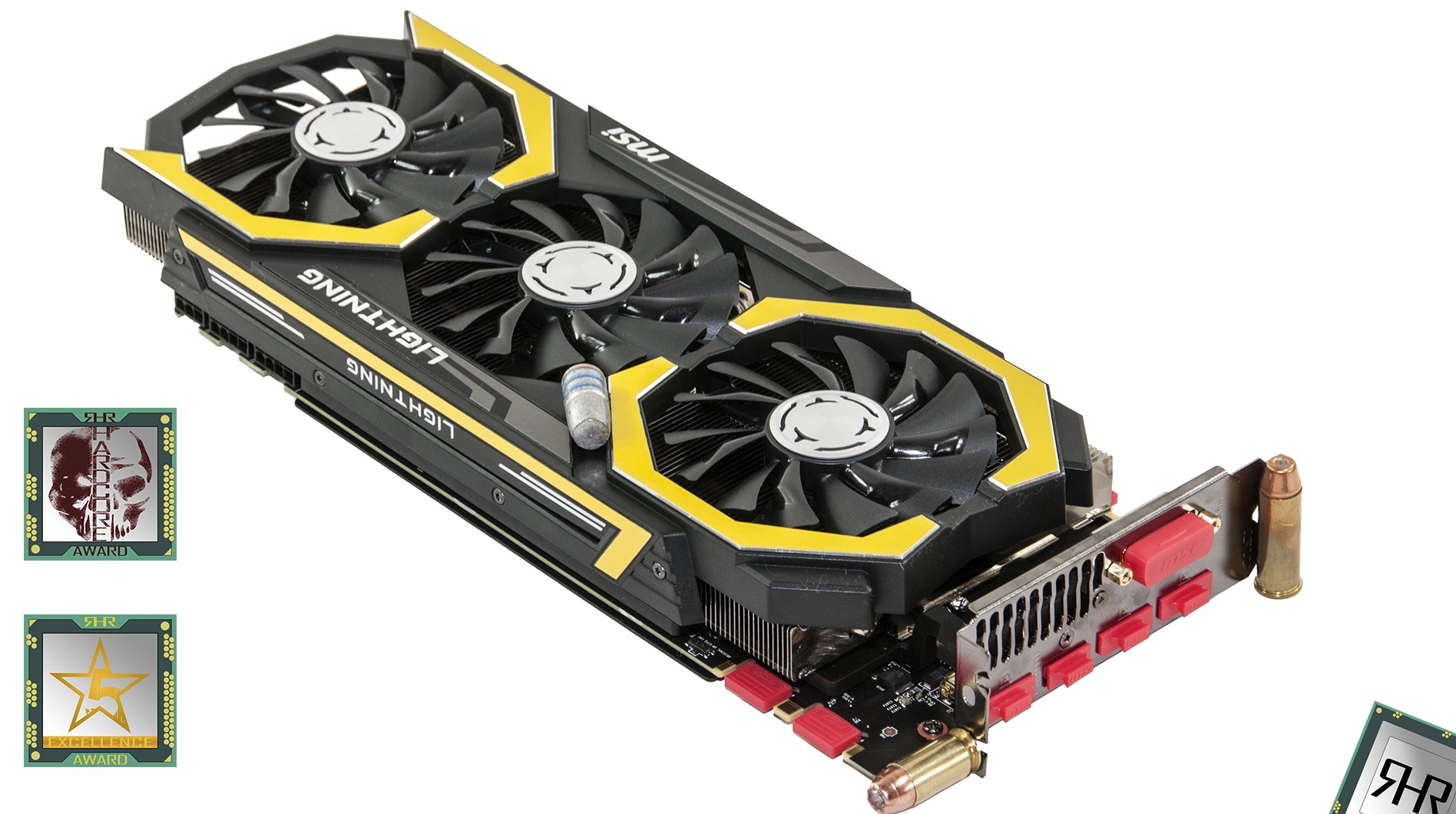
In many ways you can see the EdiMAX genetics shining clear and brightly through the MSI customizations. In others, you can see MSI and only MSI design philosophy at work. A great example of the latter is the antennas. With the default (crazy) Edi’ you get a wing design with three antennas all housed in one huge hunk of plastic (per side of the router) and a glow strip LED at each end. With said design probably being the result of a Star Wars marathon with some pretty good psychedelic’s being used in copious amounts. With the AXE6600 you get individual antennas with individual LED bars baked into each. I.E. a sane design that takes the best from the… out of the box thinking of EdiMAX’s design team’s work while also eliminating the terrible design ‘features’ of said showcase ODM model.

First and foremost, this change does give you more lighting options and you can make some interesting light shows via the web-based GUI. However, what is more important is you can ‘tune’ the shape of the omni-directional coverage ye olde AIO ‘router’ offers. First a bit of background. Antennas come in all shapes and sizes. With the higher ‘gain’ being less omni and more directional. For example, a 1 to 2 dBA antenna will pretty much offer full(ish) spherical coverage (the ish being the typical dead zone at the N/S poles). Whereas a 4dBA antenna will typically offer a directional cone that is about 40 degrees wide and 40 degrees tall (i.e. 20 degrees above and 20degress below the center plane of the antenna and 20 degrees to the left and right of the direction the coverage is being focused towards)… and a 9dBA will be even narrower at about half that in its X+Y+Z cone of coverage. However, in return for a narrower ‘beam’ said signal will degrade less over the same distance from antenna versus an ‘omni’ antenna.
We make mention of this as MSI (like basically all consumer AIO wireless networking devices) do not state what the ‘gain’ of their antennas are. Nor should they as it is a foolish standard upon which to pick a home coverage WiFi networking device. So, while MSI say they are ‘high gain’… they don’t really mean high gain. That is pretty much a misnomer and instead they mean high gain for a consumer grade FCC compliant omnidirectional antenna array. Which is tougher to fit on one line in a marketing pamphlet.
If we were to guess. We would say that EdiMAX’s are 1.5dBA (right in the butter zone for full spherical coverage and fairly ‘high gain’ for a consumer omni-directional antenna) and these probably are about the same. We say this as in testing they are omnidirectional. Blatantly so. But it does not really matter as they are adjustable. This is important because even with ‘omnidirectional’ antennas there is always a coverage hole at the top and bottom of the antenna (aka North and South Poles). Yes. Just like magnets radio antenna poles always have blank spots in their coverage. It just is physics. Thus, being able to bend in/out and front/back where these ‘dark spots’ in your WiFi network are can make a difference. Sometimes even a noticeable difference. Sometimes even worth picking one model over another – though rarely as thanks to beamforming and some highly advanced math it is not a make-or-break deal anymore.

Let’s take two examples on why moveable antennas are actually a good feature. The first is your router is the basement of your home. With 90-degree antennas the basement will get the best coverage and there will be low / no coverage gaps on the floors above said router with poor coverage in a cone shape flaring out from the router’s antennas. Flatten out a couple (or all) of those antennas and now the dead zones are outside your house – where you probably do not care if you get WiFi coverage or not.
Switch the location from your basement to your first floor ‘gaming room’ and maybe the room on the next floor above and below are in a mediocre or even dead zone. Tweak the antennas from 90 degrees to 45 and suddenly you get better overallWiFi coverage. Once again you are not changing the size of the coverage just the shape and density of said coverage in any give area… so that the meh zones are located somewhere you do not care about.

Moving on. MSI has not really changed the layout of the information LEDs, the 3 buttons, nor modified the rear I/O ports in any meaningful way beyond maybe swapping the location of a button or two. On the plus side, the information cluster is good. Physical buttons (located on the top of the router) are always nice to have bonus features, and 4 LAN ports and a WAN port is going to be more than ‘good enough’ for most average joe buyers. Sadly, the fact that it is 4 x 1GbE + 1 x 2.5GbE configuration does mean that the internals have not been blatantly customized from the bog standard EdiMAX edition.
That however is getting ahead of ourselves. The reason such a configuration is disappointing is because having a 2.5GbE WAN port connected to 1GbE LAN ports is just plain dumb. If you have paid for “above 1G” Internet packages you will not get all that speed at your computer. Just to your router. Yes. One of the 1GbE LAN ports can be configured to be the WAN and the 2.5GbE can be used for LAN duties, but then one is (technically) limiting their ISP speed package options even more to the 1G or lower packages.

Furthermore, without a secondary multi-gig LAN port (or preferably a 10Gig SFP+ port) upgrading your existing network in the future is going to result in bottlenecks… as any switch attached to this router is going to be limited to 1GbE backline connectivity. Which is fine for 99.99 out of 100 people but it is still disappointing. Bluntly stated, even ignoring the rare above 1Gigabaud ISP, in 2024 a bare minimum of dual 2.5GbE ports can be considered ‘good enough’ and quite honestly it should be 2 multi-Gig (aka NBase-T) WAN + 4 to 8 multi-Gig LAN ports.
Would this upgrade have significantly cost MSI more? Not really… but maybe. On the one hand non-Qualcomm 2.5GbE PHY (aka controllers) can be purchased for about 3 (RealTek) to 7 bucks (Marvell) per port. So, from a technical standpoint going from a 1 multi-gig Qualcomm based setup to 5 of various manufactures would have added (at the low end) $7 USD to the build cost and 2 + 10 would have cost an additional $33 USD. Not precisely breaking the bank. But it would have resulted in not being able to us the off the shelf EdiMAX option. It would have instead resulted in an entirely different (and custom) router build. So, add in another 10 – 20 bucks for a newer SoC (aka System on a Chip… aka a CPU with extras features). Then add in the design time. Then the buildout time… and probably going with SGE (Shenzhen Gongjin Electronics aka the builders of ASUS’ AX1800S router), Arcadyan (aka Philips + Accton spinoff, aaka builders of ASUS’ AXE1100 and AXE1600 routers) or even someone like Askey (favorite builders for T-Mobile’s LTE gateway, a bunch of Belkin, Linksys, NEC… Huawei and a host of others).

All of which would have nuked the value portion of this router and turned a unique(ish) router idea into just another overpriced All In Wonder that over hypes and underdelivers for the cost. For example, ASUS’ (actually good) TUF and RoG WiFi 6 non-E routers start at about $300 USD. For the WiFi 6E options with multiple 2.5GbE ports? Its closing in on 6bills and even 7 (or more). If your budget is big enough for those insanely priced Ubah Powwa (of hype) Gaming Routahs one can get a Mikrotik RB5009UPr+S+IN (under 3 bills) and a HP Enterprises Aruba Instant On AP32 (about 250). A combination that will smoke any consumer WiFi 6E on the market today in both real world performance, real world firewall protection, and upgradability (as you get a legit 10GbE SFP+ port) and save you $50 or more.
For the same as the overpriced all in wonders you can swap out the brain-dead easy to setup AP32 for a $370 Ubiquiti U6-Enterprise and drop down to the non-POE equipped RB5009UG+S+IN (same hardware as the other 5009 just with no PoE in or out), use the included POE injector that comes with the Ubi’ and get a killer configuration with insane real world coverage and performance. Heck for the cost of a 7bill ASUS router you can do the AP32(or if you are feeling frisky a Ubiquiti U7 pro for WiFi 7) + MikroTik non-POE 5009 RouterBoard plus a MikroTik CRS310 8G+2S+IN switch and let the router route, the AP provide wireless coverage, and let the 8 port multi-gig switch handle the 2.5GbE connectivity of your home Ethernet Network… while also giving you room to grow (into a 12 port 10/5/2.5/1 GbE switch like the Mik’s CRS312-4C+8XG) via the second SFP+ port on the Mik’ eight Multi-Gig switch.

Yes, ‘The Mik’ has a reputation for lacking in the user-friendliness department as they come from the Enterprise arena (fun fact… most of Europe’s private and darn near all the 3rd world ISPs mostly run on Mik equipment and only government owned/operated operations snub them in favor of the big boys). However. Their hEX, hAP, and RouterBoards all come with WebFig baked in. Making basic web-based GUI setup and config as simple (and secure) as any consumer grade all in one ‘router’… but also leaving you room to learn via WinBox for advanced configurations (with better firewall protection, better QoS, and just plain better features). This is why MSI were wise to stick to the more entry-level corner of WiFi 6E routers… as for $250 one will be hard pressed to buy new prosumer level kit. Let alone a full blown wired+wireless network.











